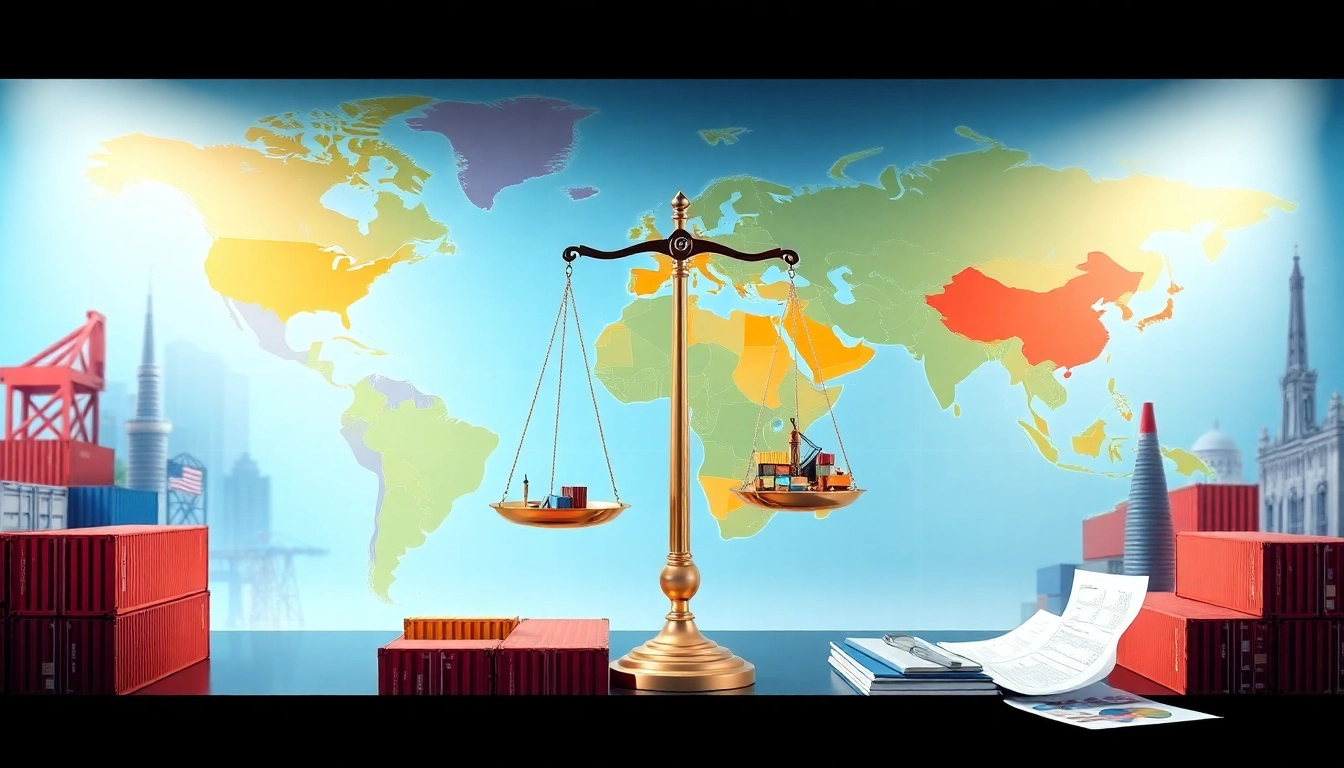Introduction to Export Tariffs
In the dynamic realm of international trade, export tariffs occupy a critical position in shaping the economic landscape. As a form of financial charge imposed on goods being dispatched outside a country, export tariffs influence the behavior of exporters and importers alike. The complexities surrounding these tariffs demand a thorough understanding, as they play a significant role in both domestic and global markets. This article delves deep into the concept of export tariffs, elucidating their definition, purpose, differences from import tariffs, historical context, calculation methods, economic impact, legal framework, and future trends.
Definition and Purpose
Export tariffs, often referred to as export duties, are taxes levied by a government on the sale of goods to foreign nations. The primary purpose of export tariffs is to generate revenue for the government while also regulating the quantity and type of goods exported. By imposing such tariffs, governments can protect domestic industries from foreign competition, manage the deficit of certain resources, or respond to international market conditions.
How Export Tariffs Differ from Import Tariffs
While both export and import tariffs serve the overarching goal of regulating trade, they operate differently. An import tariff adds extra costs to foreign products arriving in a country, aimed at protecting local businesses by making imported goods less competitive. In contrast, export tariffs charge exporters for moving goods out of the country, which can also serve as a tool for governments to restrict the quantity of essential commodities being exported—potentially preserving domestic supply and stabilizing prices.
Historical Context of Export Tariffs
The historical application of export tariffs varies widely across countries and periods. In ancient China, for instance, export tariffs played a crucial role in regulating trade and collecting revenue. In modern contexts, the use of export tariffs has seen fluctuations influenced by political landscapes, economic policies, and global trade networks. For example, during the early 20th century, many nations utilized export tariffs in response to the economic upheaval caused by World War I and II, aiming to secure local resources while managing international trade relations.
Calculating Export Tariffs
Understanding how to calculate export tariffs is essential for manufacturers and exporters aiming to navigate the complex landscape of international trade effectively. Accurate calculations can lead to better pricing strategies and enhanced competitiveness in global markets.
Factors Influencing Export Tariff Rates
The calculation of export tariffs is influenced by various factors, including product type, market demand, the destination country, and trade agreements. Specific goods may attract higher tariffs based on their economic importance or scarcity, while countries that have favorable trade deals might offer reduced or even zero tariffs for specific exports. Other influencing elements include market conditions, production costs, and the legal constraints imposed by international agreements.
Methods of Calculation
There are typically three primary methods used to calculate export tariffs: ad valorem tariffs, specific tariffs, and mixed tariffs. Ad valorem tariffs are based on the value of the goods being exported, calculated as a percentage of the total export price. Specific tariffs, on the other hand, are fixed charges imposed per unit—regardless of the item’s overall value. Mixed tariffs combine both methods, applying an ad valorem measure alongside a specific fee, thus creating a more tailored approach to taxation.
Examples of Export Tariff Calculations
For instance, consider a company exporting luxury electronics valued at $100,000 with an ad valorem tariff rate of 10%. The export tariff would amount to $10,000. Conversely, if the same company is subject to a specific tariff of $5,000 plus a 10% ad valorem fee, the calculation would involve both elements, making the total tariff $15,000. Such examples illustrate the importance of understanding the applicable tariff structures in order to effectively set prices and maintain competitiveness.
The Economic Impact of Export Tariffs
Export tariffs can have profound economic implications, impacting not only the exporters themselves but also consumers, domestic industries, and the overall economy. Understanding these effects is crucial for businesses navigating this landscape.
Effects on Domestic Producers
For domestic producers, export tariffs can lead to both advantages and disadvantages. On the one hand, they can provide a form of protection against foreign competition, allowing local companies to maintain market share and stabilize prices. On the other hand, high tariffs on raw materials needed for production can increase production costs, negatively impacting profit margins. Furthermore, competitors in other countries may benefit from lower tariffs, undermining the position of local businesses in international markets.
Influence on International Relations
Export tariffs can also significantly influence diplomatic relations among countries. When a country imposes tariffs on a particular product, it may lead to retaliatory measures from trading partners, escalating into trade disputes or conflicts. For instance, the 2018 tariff impositions by the United States during the trade war with China not only affected bilateral trade balances but also strained diplomatic relations, prompting countries to seek alternative trading partners.
Case Studies of High-Profile Export Tariffs
Analyzing specific case studies can shed light on the real-world implications of export tariffs. An example includes the Steel and Aluminum tariffs imposed by the U.S. government in 2018, which were intended to protect domestic manufacturers. However, these tariffs resulted in significant cost increases for industries reliant on these metals, including automotive and construction, leading to upward pressure on consumer prices and retaliatory tariffs from affected countries. In contrast, Brazil’s export tariffs on soybeans aim to ensure domestic availability and stabilize prices for local consumers, showcasing different approaches to export tariff implementation.
Legal and Regulatory Aspects
Understanding the legal and regulatory framework surrounding export tariffs is essential for compliance and effective strategy development.
U.S. Constitutional Context for Export Tariffs
In the United States, the Constitution (Article 1, Section 9) prohibits export taxes, a reflection of the historical commitment to free trade. As such, any form of taxation on exports must align with constitutional stipulations and cannot undermine the principles of fair competition. This legal backdrop underscores the complexity for U.S. policymakers who must navigate international trade obligations while adhering to domestic laws.
International Trade Agreements and Export Tariffs
Various international trade agreements, such as the North American Free Trade Agreement (NAFTA) and the World Trade Organization (WTO) protocols, play a critical role in regulating export tariffs. These agreements often aim to eliminate barriers to trade, including tariffs, thereby fostering economic cooperation among member countries. Businesses must be cognizant of these agreements when planning export strategies to ensure compliance and maximize market access opportunities.
Enforcement and Compliance Challenges
Enforcement and compliance pose significant challenges in the realm of export tariffs. Variations in regulation across countries can result in confusion among exporters, potentially leading to unintentional violations. Additionally, countries may engage in practices such as tariff evasion or misclassification of goods to circumvent higher tariffs, which can lead to penalties and trade sanctions. As such, organizations must invest in robust compliance frameworks and consult with trade experts to mitigate risks effectively.
Future Trends in Export Tariffs
As global trade continues to evolve, future trends in export tariffs will likely be shaped by technological advancements and shifting geopolitical dynamics.
Projected Changes in Global Trade Policies
With the rise of protectionist sentiments in various countries, future changes in global trade policies could lead to an increase in export tariffs. Such movements may have profound consequences on international trade flows and require businesses to adapt quickly to emerging regulations. Additionally, shifting supply chains due to geopolitical tensions may lead manufacturers to reassess their export strategies in response to tariffs imposed by trading partners.
Impact of Technology on Tariff Processes
Technological advancements may revolutionize the way export tariffs are calculated and collected. Automation, blockchain, and AI technology can facilitate more efficient processing of export documentation and tariff classification, reducing delays and increasing compliance rates. Furthermore, advances in data analytics can help businesses predict tariff changes, enabling them to adjust their strategies proactively.
Strategies for Businesses to Adapt to Tariff Changes
To navigate the complexities of fluctuating export tariffs, businesses can adopt several strategies. These include diversifying supply chains to mitigate risk, engaging in proactive communication with governments and trade organizations, and leveraging data analytics for informed decision-making. By staying ahead of trends and adapting to regulatory shifts, businesses can not only survive but thrive in increasingly competitive global markets.



